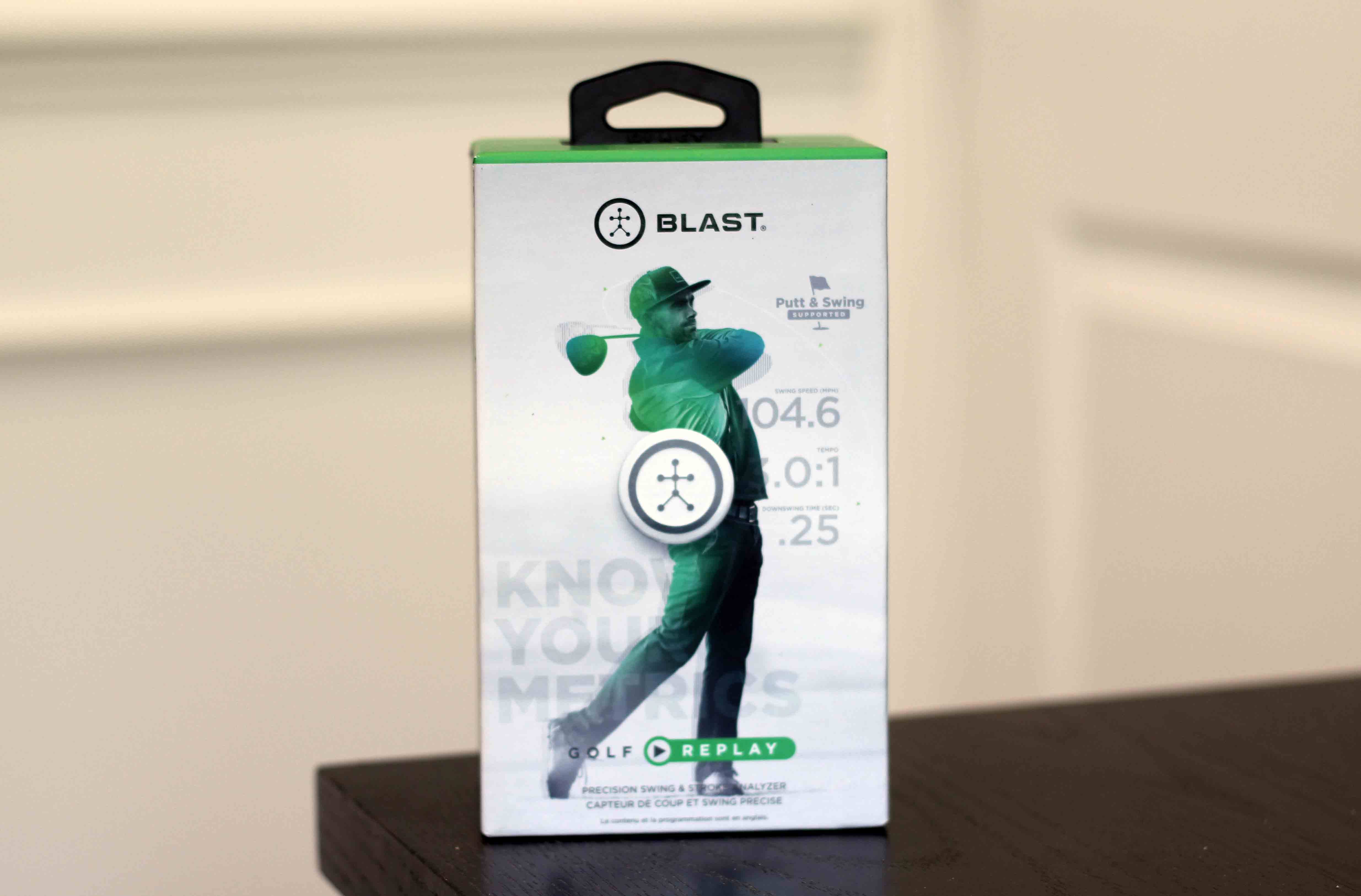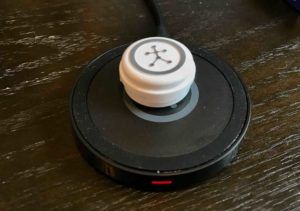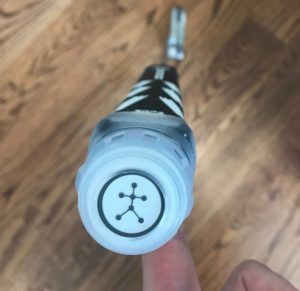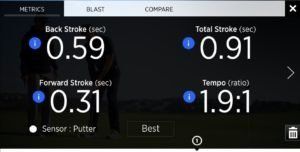
Blast Golf has recently become one of the leading swing analyzers on the market. There are a variety of touring pros using their device to measure key stats on their putting strokes. The instructional community has started to embrace it as a teaching tool as well.
I had been hearing more and more about its effectiveness, specifically with putting, and was interested to try it out on my own stroke so I can make some improvements for the coming season.
I have tested many of the other leading swing analyzers on the market so I have a good idea of what the pros and cons are of each product, and I wanted to let all of you know whether or not Blast Golf is worthy of your time and money.
Long story short, I think they have done a great job at addressing how golfers can put meaningful work on their putting stroke. This device focuses on the timing of your stroke, and anyone who is a reader of this site knows that is a concept I encourage golfers to pursue in their full swing.
How it Works
One of the key factors that I believe makes any swing analyzer successful is how easy it is to use. Blast is quite easy to pair with your phone, and it charges wirelessly. The unit powers on automatically once you turn on the app and begin putting which is a nice feature.

Each time you make a stroke you are immediately given eleven data points that are mostly focused on your timing.
Blast Golf is using a small sensor that attaches to the top of your grip. Some other products attach to the shaft (Swingbyte, Skypro) whereas others attach to your golf glove (Zepp). I have found that each method has its pros and cons.
It does require some effort to attach the Blast Golf sensor to your grip. If you just keep it on your putter during your practice sessions it will limit any frustrations you might have.

While Blast Golf can analyze your full swing, my recommendation is to use it with your putter. I believe it's far more effective than the other swing analyzers in this category for putting data.
The Data
I believe the true effectiveness of any swing analyzer is how it presents the data to the end user. If it's too complicated, and not intuitive, then golfers will mostly likely stop using it.
Blast Golf has done a very good job of achieving this goal. While the app is not perfect, I believe once you get up and running you will learn how to use it easily.
There are eleven data points you are presented with each time you make a putting stroke. Each one has a set of videos associated with it. They help explain why they are important and what metrics you are looking to achieve. Additionally, they give some advice on how to improve your numbers.
Bonus Content:Be sure to check out my complete guide to putting.
Personally, I don't believe any golfer can worry about that many data points at once. My recommendation is to first work on the timing of your backstroke, forward stroke, and overall tempo. If you can start to get a repeatable timing with your backstroke and forward stroke, and keep those in a ratio of 2:1, I believe good things are going to happen for you on the putting green. At that point it might make sense to start working on some of the other metrics.
The app allows you to choose which data to display with each stroke, and has an option to say it out loud as well.

I have done similar work with my full swing, and seen tremendously positive results. A repeatable tempo is an extremely important swing fundamental. We now have the technology to help golfers work on it properly. To me that is the main benefit of Blast Golf - they have done this with putting.
My Experience with Blast Golf
Putting is a big priority for me these days. I keep detailed stats of my game through the use of GAME GOLF, and it's become clear that if I want to improve my play that putting will have to be a part of it.
Over the last two years I have had several people who know a thing or two look at my putting stroke. They all have had similar feedback. The timing of my backstroke and forward stroke are disproportionate. Somewhere around my transition I am not connecting the two properly.
Last fall I was out in Las Vegas and a prominent Champions Tour Player used some choice language after looking at my putting. While I knew exactly what I had to fix, I couldn't do it without the proper feedback. Words were not enough for me.
When I first started using Blast Golf things became a bit clearer. My backstroke timing was well over .8 seconds, which was well out of proportion to my forward stroke, which was averaging just over .3 seconds. That put my tempo well over 2:1, which is the optimal ratio that you are looking for.
You can see a summary of your stats over time using their app:

As I started to work with the sensor over several weeks something interesting occurred. I was able to drastically shorten the timing of my backstroke and keep my transition in line with the timing of my forward stroke. I gradually progressed down from around .85 seconds to about .6 while keeping my forward stroke stable around .30 seconds. This got me exactly where I wanted to be in terms of my tempo.
I have to say, when I am able to strike putts with that timing I'm getting great results and my stroke feels more controlled and balanced. There is no question I am hitting my intended line more on the course, and my performance is heading in the right direction.
It's All About Speed Control
At the recreational level, improving your performance on the greens is mostly about limiting three putts, and making a few more putts inside of 10 feet. As we've discussed before, putting is extremely difficult and based on the stats of professional golfers those two goals are somewhat within reach for most players (with the emphasis being on limiting three putting).
I believe the core of most golfers' issues is speed control. If you can learn to control your speed on the greens you will leave yourself with shorter putts, which will limit three putting.
How do you improve your speed control?
Having a repeatable stroke is a good place to start, and the timing of that stroke is extremely important. That is essentially where I believe that Blast Golf will help. It will first and foremost diagnose the timing (or lack thereof) for a player. Then it will allow them to measure their progress in order to achieve an optimal stroke that they can repeat more often.
How You Should Use It
My intention is to keep using Blast Golf during my practice sessions throughout the golf season as a way to "audit" my putting stroke.
If you want to improve your putting, and aren't against using technology, I think this could be a tool that helps you. My advice would be to work on things piece by piece based on the information you receive. You could also mix in other training aids such as TIBA Putt (check out my full review here) to help with the path of your stroke.
In my situation it was obvious that my backstroke was the main problem. I specifically focused on the timing of my backstroke and didn't worry about anything else. Over a few sessions I was able to move from .85 seconds to .75 seconds. Once that felt normal, I moved a bit faster until I got down to .6 seconds. That felt like a good place to settle on. Now my goal will be to keep my stroke in a 2:1 ratio of .6 to .3 seconds. My putting stroke feels far better with this timing, and it was a welcome change to be honest.
The challenge will now be to take this timing out on the golf course. So far the transition has been relatively easy. I firmly believe doing this kind of focused practice where you are challenging yourself is the best way to get there. Typically when golfers practice their putting (or any other part of their game) there is no structure, validation, or real pressure being put on themselves. A tool like this can help fix that problem.
Overall, I think Blast Golf is a solid swing analyzer if you are using it for putting. They have wisely chosen to focus on this part of the game. I believe as of right now it's the best diagnostic tool available to recreational golfers who are looking for this kind of help with the flatstick.
You can purchase Blast Golf on Amazon here for $115.
We care about the protection of your data Read our Privacy Policy